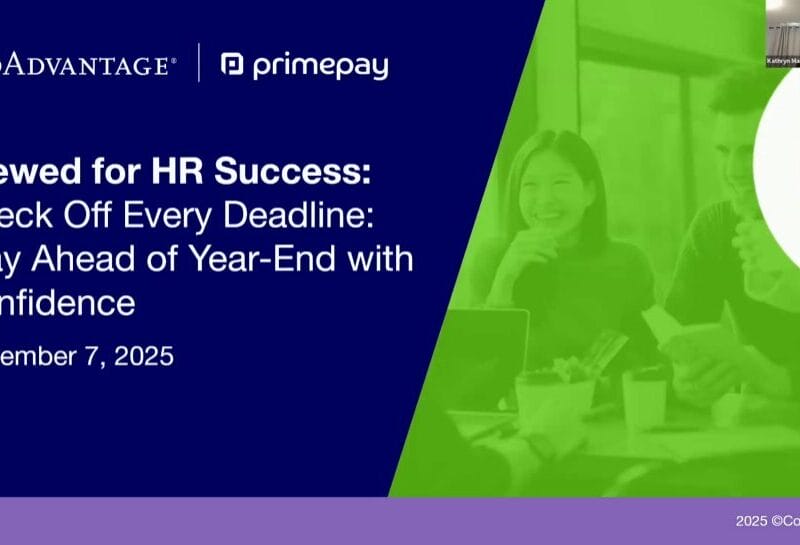How often should you pay your employees? What are the common frequencies that employees get paid? These are important questions every business owner has to figure out when managing payroll.
The answer depends on the needs of your staff as much as the overall impact on your business. Your business size, industry, the type of employees you have, their compensation rates, federal laws, and state laws all have an influence on your decision.
Whether it’s once a week, every two weeks, on a monthly basis, or twice a month, we’ll discuss the pros and cons of each pay schedule so you can decide the payroll frequency that’s right for you. We’ll also talk about the instances when you might want to change your payroll frequency, offering your employees earned wage access (EWA), and how you can go about it.
What is pay frequency?
Pay frequency, also called payroll frequency, is how often an employer pays employees. Ideally, employees are paid following a consistent schedule throughout the year so they know what to expect and how to budget.
Payroll frequency can be weekly, biweekly, semi-monthly, or monthly.
What is the most common payroll frequency?
According to the Bureau of Labor Statistics (BLS) the most common pay frequency is biweekly. Data shows that 43% of U.S. businesses pay their employees biweekly and 27% pay weekly. Semi-monthly and monthly are less common.
Pay Frequency Options
Below are the most common pay frequencies offered by employers.
Weekly pay period (52 paychecks per year)
A weekly pay period means that employees are paid at the end of each week for the hours they worked during the previous week. Businesses that adopt a weekly payroll schedule usually do so when a large number of their employees are hourly. For example, industries like construction and manufacturing typically use a weekly frequency of pay.
Pros of weekly pay periods:
- Tracking and calculating overtime is easier.
- Employees are able to manage their personal budgets more easily.
- Quick and frequent access to pay can help improve job satisfaction among employees.
Cons of weekly pay periods:
- Processing payroll every week requires a significant administrative effort that takes a lot of time, can increase the chance for errors, and adds to your overall bookkeeping workload. This can result in less payroll efficiency than other pay frequency options.
- If you use a payroll provider that charges per payroll run, the cost of payroll with a weekly pay schedule can be higher.
Bi-weekly pay period (26 paychecks per year)
A bi-weekly pay period means that employees are paid every two weeks on the same day. Businesses that pay bi-weekly usually have a mix of hourly and salaried employees, as the pay frequency works well for both categories.
Pros of bi-weekly pay periods:
- You don’t have to run payroll every week, which means less administrative work and fewer chances for errors.
- Overtime is relatively simple to calculate for hourly workers.
- The predictability of a bi-weekly pay period helps employees budget.
Cons of bi-weekly pay periods:
- There are two months in the calendar year that end up with three pay periods, which can complicate bookkeeping and financial planning.
Semi-monthly pay period (24 paychecks per year)
A semi-monthly pay period means employees are paid twice each month, most commonly on the 15th and the 30th or 1st. Semi-monthly pay periods are a good choice for businesses with salaried employees.
Pros of semi-monthly pay periods:
- Tracking payroll expenses and calculating benefit deductions is easier with minimum frequency.
- Getting two paychecks per month is frequent enough for salaried employees to avoid financial hardship, especially if they’re well-compensated.
Cons of semi-monthly pay periods:
- If you have hourly employees, a semi-monthly frequency makes it harder to calculate weekly overtime.
- For employees that have to adapt to semi-monthly payments, it can be a bit challenging since there’s no set payday; for example, they may be paid on a Monday one pay period and a Thursday the next time.
Monthly pay period (12 paychecks per year)
A monthly pay period means that employees are paid once a month. These days, it’s the least common pay schedule and the least preferred by employees.
Pros of monthly pay periods:
- Because you only have to run payroll once per month, you save significant administrative time and expenses, especially if you’re using a payroll service provider.
- A monthly payroll schedule works well for 1099 workers or contractors who invoice monthly or if you have salaried employees that are well-compensated.
Cons of monthly pay periods:
- Getting paid monthly is not practical or desirable for hourly employees.
- It can be difficult to find and retain employees if you’re only paying them once per month.
- Paying employees’ wages once a month, may not adhere to some state payday requirements.
Bi-weekly vs. semi-monthly pay periods
There may not seem like much of a difference between these two pay periods — since both generally correlate to employees getting paid twice a month.
But as discussed, the bi-weekly approach means there are two months out of the year in which employees are paid three times, as opposed to semi-monthly in which employees are always paid twice per month, no matter what. Therefore, adopting the bi-weekly approach comes with a little extra administrative work and budgeting complexity.
See the other pros and cons outlined above for both pay schedules.
How your location affects pay periods
Where your business operates geographically also plays a role in determining which type of payroll frequency to choose.
Many states have laws and pay frequency requirements that mandate pay dates. For example, some states don’t allow a monthly pay schedule. Others mandate that employees have to be paid at least twice per month on regular paydays.
Still, other states allow businesses to pay hourly employees on whichever pay schedule the business chooses, but with the provision that certain types of workers have the right to a bi-weekly pay period.
The best thing to do if you operate in multiple states is to check with each state’s U.S. Department of Labor (DOL) to ensure your payroll schedule complies with all local labor laws and regulations.
Why you might want to change your payroll frequency
Though it can cause a temporary disruption, there are a number of good reasons for changing your current pay schedule:
Stay in compliance with state laws
If you expand your business operations into other states, you’ll need to make sure you’re following each state’s requirements around pay frequency. Failure to follow the laws could result in fines and penalties.
Improve paycheck consistency
If employees struggle with getting paid on different days of the week — as is the case with a semi-monthly schedule — you may want to adjust the payroll frequency to a bi-weekly one so your staff knows they’re always getting paid on a Friday, for example. Bringing more consistency and predictability to employees’ lives regarding the payment of wages is generally appreciated.
Make business budgeting and planning easier
If cash flow projections or budgeting are tough for you, then switching to a different pay frequency might help. For example, if you use a bi-weekly schedule in which two months out of the year you need to process three paychecks instead of two, you might consider switching to a semi-monthly or monthly pay frequency that reduces complexity and streamlines financial planning.
Manage employee role changes
If an employee moves up from an hourly role to a salaried role, you may want to change their payroll frequency as well. Hourly employees do well with a weekly schedule, but salaried employees — especially well-compensated ones — can more easily get by on a less frequent schedule, such as bi-weekly, semi-monthly, or monthly.
Need to change your pay frequency? Here’s how
If you decide to change your pay frequency, use the following guidelines:
1. Pay attention to FLSA rules
The Fair Labor Standards Act (FLSA) governs minimum wage, overtime pay, record-keeping, child labor, and other employment standards. Make sure that if you change your pay frequency you’re not inadvertently violating any FLSA rules.
2. Check your state laws
You also need to be sure that a pay frequency change doesn’t violate state laws either. Check with the Department of Labor in each state in which you operate to find out what the specific laws are — if any — around pay frequency.
3. Change pay and deduction amounts
Changing your pay frequency means you also need to change paycheck and withholding amounts, such as for benefits and taxes. Though annual withholdings end up the same no matter which pay schedule you use, per-paycheck withholdings will be different according to how often you process payroll.
4. Communicate the change to your employees
Employees depend on their current pay schedule for everything from automatic bill paying to cover household expenses to long-term financial planning. That’s why it’s so important to communicate the change so they have time to prepare. Be super clear about the exact timing of the change, offer any supportive resources to help employees adjust, and give frequent reminders up until the change happens.
5. Roll out the change
When it’s go time, give your payroll provider or accountant a thumbs up so they can start processing payroll according to the change. If you use payroll software instead, input the new schedule into the system, which should then automatically adjust payroll and tax withholdings to reflect the new schedule.
Why you might want to consider on-demand payroll
In today’s evolving workplace landscape, employers are increasingly exploring innovative ways to enhance employee financial wellness. One such solution gaining popularity is offering earned wage access, also known as, on-demand pay. This financial wellness benefit provides hourly employees with the flexibility to access a portion of their earned wages before the traditional payday. Let’s explore why employers should consider offering this valuable perk and examine its pros and cons.
Pros of offering on-demand pay:
- Demonstrates the employer’s commitment to employee financial well-being, leading to improved morale and job satisfaction.
- Enhances the company’s reputation as an employer of choice, attracting top talent in a competitive job market.
- Minimizes the resources spent on payroll adjustments due to errors or discrepancies, as employees have real-time visibility into their earnings.
- Boosts employee loyalty and retention rates, as this benefit is highly valued by hourly workers.
- Enables employees to address unexpected expenses or financial emergencies promptly.
- Enhances overall financial stability, reducing financial stress among employees.
- Enables better budgeting and financial planning, as employees can manage their cash flow effectively.
- Promotes financial literacy and responsibility, as employees gain a clearer understanding of their earnings and spending patterns.
- Reduces administrative burdens associated with traditional payroll cycles, such as check printing and distribution.
Cons and potential drawbacks of offering on-demand pay:
- Offering on-demand pay may create a reliance on this benefit, potentially leading to frequent usage that disrupts cash flow management. Employers should encourage responsible usage and educate employees on financial planning.
- It may require more monitoring as it relates to state regulations.
Earned wage access or on-demand pay can be a valuable financial wellness benefit for hourly employees. By offering greater financial flexibility, employers can empower their workforce, enhance employee satisfaction, and improve overall financial well-being. However, employers should carefully evaluate the pros and cons, considering implementation requirements, costs, and potential dependencies, while ensuring compliance with applicable regulations. By striking the right balance, employers can foster a positive work environment and provide a valuable benefit that supports their employees’ financial goals and needs.
How PrimePay can help
Pay frequency is a critical decision that impacts everything from job satisfaction to business finances to the level of administrative support you need.
No matter which pay schedule you implement, you need it to be consistent so that you and your staff can plan around it. As the business owner, you also need payroll to be as easy and accurate as possible so it doesn’t add undue burden or cost.
With PrimePay’s payroll software and payroll service solutions, you can easily stick to your payroll schedule. PrimePay helps you run payroll accurately and on time to meet any schedule you choose, and it ensures compliance with all payroll- and tax-related laws and regulations. And we provide you with the opportunity to offer financial wellness benefits to employees at no cost or lift to you.










